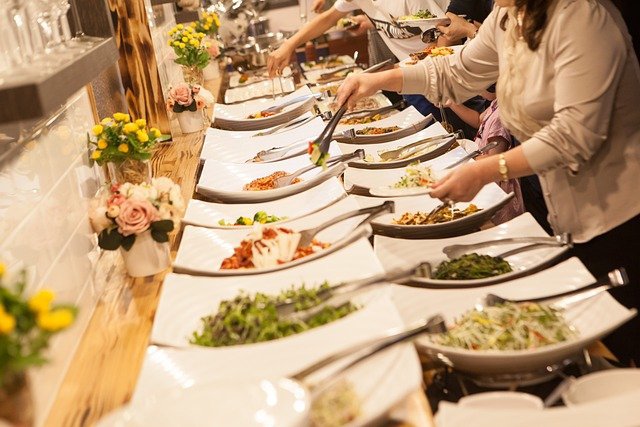In a world where culinary choices are as diverse as the people themselves, catering for a broad spectrum of dietary needs has become an integral part of event planning and hospitality. From dietary preferences to allergies, ensuring that everyone can partake in a delightful dining experience requires a thoughtful approach. This blog post delves into the significance of accommodating various dietary needs, offering insights on navigating allergies and preferences to create an inclusive and enjoyable atmosphere for all.
Understanding Dietary Diversity
1. The Mosaic of Dietary Preferences
With dietary preferences ranging from vegetarian and vegan to keto and paleo, recognizing the diverse landscape is the first step in creating a menu that caters to everyone.
2. Navigating Health Concerns and Allergies
Understanding and addressing allergies to common ingredients like gluten, dairy, nuts, and more is essential for the well-being of guests.
Navigating Allergies
1. Open Channels of Communication
Establishing effective communication channels helps in collecting essential information about dietary restrictions, ensuring a smooth catering process.
2. Guarding Against Cross-Contamination
Vigilance in preventing cross-contamination during food preparation is paramount, particularly for those with severe allergies.
3.Collaborative Solutions with Guests
Collaborate with guests to customize menus, providing alternatives and ensuring a positive dining experience for everyone.
Adapting Menus for Preferences
1. Versatility in Menu Planning
Tips for chefs and caterers on crafting menus that are versatile enough to accommodate a wide array of dietary needs without compromising on taste.
2. Innovative Alternatives
Showcasing creative and delicious alternatives for common ingredients, making the dining experience enjoyable for both those with restrictions and those without.
3. Transparency through Labeling
Clear food labeling aids guests in identifying dishes suitable for their specific dietary requirements, promoting a stress-free dining experience.
The Future of Inclusive Catering
1. Leveraging Technological AdvancementsExplore the role of technology, such as event RSVP platforms and dietary preference tracking, in streamlining the catering process.
2. Continuous Education and Training
Highlighting the importance of ongoing education and training for catering staff to stay informed about diverse dietary needs and emerging food trends.
Conclusion
In conclusion, catering for dietary needs transcends mere sustenance; it's about creating an inclusive and memorable experience for all guests. By understanding the intricacies of various diets, fostering open communication, embracing culinary creativity, and leveraging technology, event planners and caterers can ensure that every individual feels not only accommodated but celebrated in their unique dietary choices.

Comments
Post a Comment